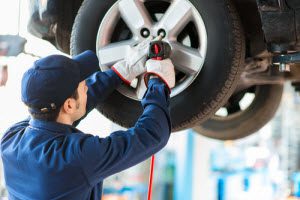When driving around Brockton, Randolph, and Stoughton, the main things you often  focus on are your comfort level, the other vehicles on the road, and if you have enough gas in the tank. On the flip side, one aspect of your vehicle that you might not think about is tire pressure. However, having enough tire pressure is a major aspect of your vehicle’s drivability. In this guide to the importance of tire pressure, our team at Collision 24 will go over exactly what it is and the warning signs of when it’s getting too low. While reading, don’t hesitate to contact us if you have any questions.
focus on are your comfort level, the other vehicles on the road, and if you have enough gas in the tank. On the flip side, one aspect of your vehicle that you might not think about is tire pressure. However, having enough tire pressure is a major aspect of your vehicle’s drivability. In this guide to the importance of tire pressure, our team at Collision 24 will go over exactly what it is and the warning signs of when it’s getting too low. While reading, don’t hesitate to contact us if you have any questions.
Tire Pressure: Definition
Tire pressure is more than just the air inside your tires. It’s actually the atmospheric pressure that measures the amount of air inside. It’s measured in PSI, or pounds per square inch (where you’ll find the needed amount on the inside of your car’s door). So, while you think it’s the tires that support the weight of your car, it’s actually the air inside them that do that.
Why Is It Important?
Proper tire pressure helps the vehicle drive smoother, with better handling and traction, and a more comfortable ride for you. It also helps the tires wear evenly, which prolongs their life and greatly improves your car’s fuel economy. If the pressure in the tires is too low, this increases their wear, which means you’ll have to buy new ones more often. Underinflated tires are also more flexible when they move, so there’s an increase in rolling resistance, which results in a decrease in fuel economy. You may think that the answer is to inflate tires to their maximum capacity. However, this can be just as dangerous as not having enough air in them. Overinflated tires can be rigid and stiff, leading to a harder ride along with uneven tread wear. The traction could also be reduced, and your tires could even blow out.
When to Check Tire Pressure
There are several times you should be checking your vehicle’s tire pressure. They could be when you stop to get gas, every time there’s a 10-degree change in temperature, or every 30 days. You might want to check them more frequently if you happen to drive over a sharp object, like a nail that could have punctured the rubber, or if you accidentally hit a curb or other object. Also, the best time of day to check your tires is when they’re “cold.” This means either first thing in the morning or about three hours after you’ve driven the vehicle. However, before you go out and check the weight of your tires, there are several indicators of low pressure, including:
- Your vehicle’s dashboard, if it’s equipped with a tire pressure monitoring system
- Squealing tires as you’re driving around corners
- A quick examination to see if they look too low
Schedule Service
Low tire pressure over time is normal. However, if you’re experiencing it frequently, take your vehicle to our service center at Collision 24, where our certified technicians will inspect its tires and repair them, if necessary. Contact us to make an appointment, and we’ll get you safely back on the streets of Brockton, Randolph, and Stoughton as soon as possible.
your vehicle to our service center at Collision 24, where our certified technicians will inspect its tires and repair them, if necessary. Contact us to make an appointment, and we’ll get you safely back on the streets of Brockton, Randolph, and Stoughton as soon as possible.
